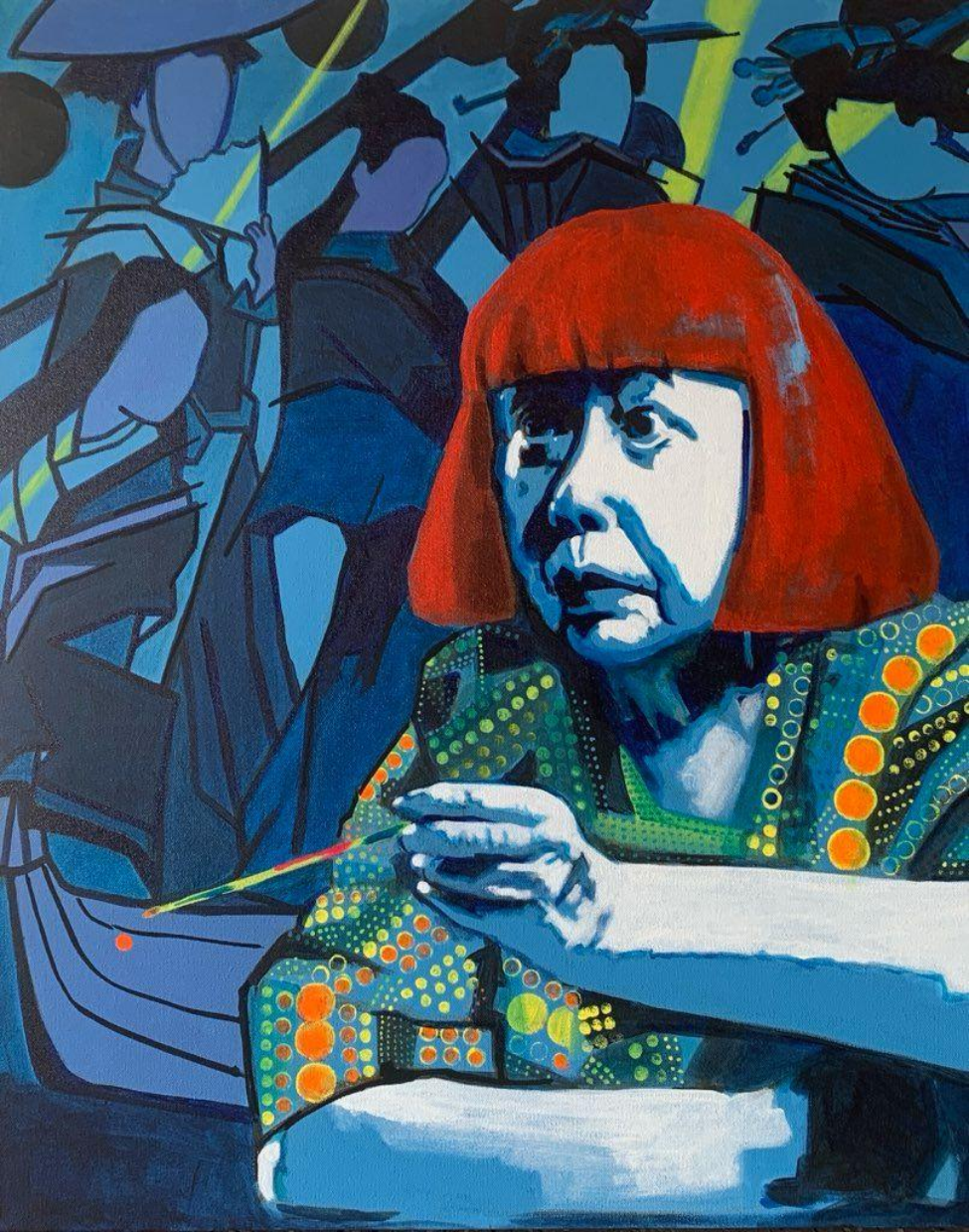The study of art helps medical students become better doctors, according to UTHealth Houston artist-in-residence



No two people look at a painting or watch a performance the same way. One might pick up color, brushstrokes, the resonance of a voice. Another might see a hidden figure, the shape of a smile, or the lightness in the footsteps as an actor crosses the stage.
While that may not seem related to teaching medicine, educators have found that adding the study of the arts into medical school classes can help future doctors become more empathetic and, therefore, better physicians.
“One way to learn about yourself is to notice your literal response to things. If I don’t like a piece of art, but someone else does and shares openly why they like it, I may be able to connect to that very same piece of art and develop a new appreciation for it,” said Anson Koshy, MD, MBE, artist-in-residence at the John P. McGovern Center for Humanities and Ethics in McGovern Medical School at UTHealth Houston. “This can help when dealing with a difficult patient or experience. If I can access a different lens, I may be able to come back with a bigger or wider perspective.”
Koshy, who leads the Arts and Resilience Lecture Series and the Graduate Medical Education Certificate Program in Humanities and Ethics at McGovern Medical School, said each person’s response to art sets off an internal dialogue. An understanding of how a work of art affects a person can teach them something about themselves.
“Self-awareness is the hardest thing to teach. Your natural response to a work of art affords you the opportunity to ask, ‘Why did I have this reaction?’ The process is self-reflective,” Koshy said. “We use specific objects or works of art in order to stimulate a conversation about the object and talk openly about how we feel about it. We can create an opportunity for learners to share as little or as much about themselves as they want in speaking about an artwork since it’s not directly asking them to open up about themselves in a personal way – although they can choose to do that if they wish. It affords a sense of security and psychological safety.”
That same intentional focus on art can be translated to the clinic or hospital room with a patient.
“A creative practice, whether looking at or creating art or even watching a play or performance, can be seen as practice in mindfulness. There is value in noticing what I am directing my attention to and perhaps there are other things going on that I am completely missing, even if they are sitting right in front of me. If a parent comes to an appointment overly anxious, for example, and I notice that, I will often invite them to talk about it: ‘How are you feeling? It’s OK if you’re a little nervous today.’ That validates their experience and, in the end, can make a clinical appointment go a bit smoother,” said Koshy, who is a developmental and behavioral pediatrician.
Attention to performance art, Koshy said, helps students examine nonverbal cues and even confront unintentional bias.
“We can think about how we communicate with patients nonverbally and how we interpret nonverbal communication in return,” he said. “When reading cues, we will inherently make our own assumptions. In turn we may realize our assumptions or biases may negatively impact our understanding of what someone is actually experiencing.”
According to a 2018 paper published in Heart Views of the Gulf Health Association, attention to the arts can help medical students become more thoughtful and listen carefully to patients, so as doctors they can make informed decisions. That is not always an easy task, Koshy said, so practice through engaging with art, including performance art, can help.
“With theatre, distractions are limited so you can more easily focus your attention on the performance in front of you. But in a clinic when seeing a patient, your cell phone might be going off in your pocket, other patients are waiting to see you, you are teaching trainees, and your nurse may need something urgently from you. There are just so many demands on a physician’s attention. We may even find ourselves acclimating to a world of constant distraction and an unending need to constantly check our phones,” he said. “Paying attention to performance art and having the opportunity to unplug and focus entirely on the performance in front of us allows us space to practice just being present.”
Koshy said physicians need to take a step back from their daily hectic pace and the performing arts can help them do that.
“I believe we need to actively decondition ourselves from the rigors and automaticity often required in a fast-paced career in medicine,” he said. “When watching a performance, we can think about all the nonverbal cues intended to guide our understanding on the larger narrative or the emotional state of the character and the mood the director is working towards. There are so many things that are planned, scripted, and rehearsed, that are meant to inform us and nurture the many layers and emotions in a performance. It would be such a shame for a physician to miss similar layers of a complexity, nuance, and things that are unsaid during a patient visit in the clinic.”
UTHealth Houston is the proud presenting sponsor of Alley Theatre’s “A Christmas Carol.”
Media inquiries: 713-500-3030